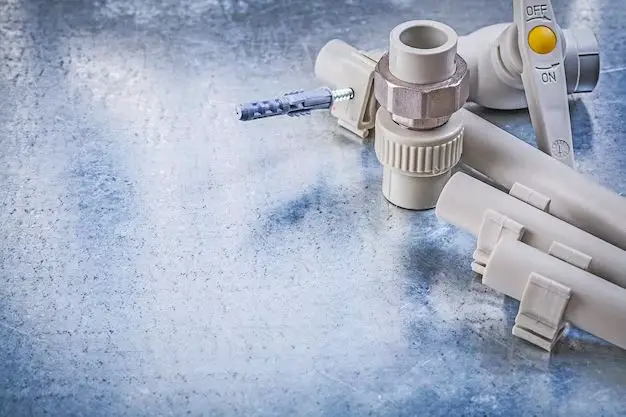A clogged water inlet valve can cause low water pressure and other issues with your appliance or plumbing system. Unclogging the valve is usually a straightforward process that can be done without calling a plumber. Here are some quick answers on how to unclog a water inlet valve:
Page Contents
What causes a water inlet valve to clog?
– Mineral buildup from hard water
– Sediment in the water lines
– Rust particles
– Small pieces of debris
Over time, these materials can accumulate inside the valve and restrict water flow. The valve is usually located behind or below the appliance it supplies water to.
How can you tell if the water inlet valve is clogged?
Signs of a clogged inlet valve include:
– Reduced water flow from the appliance
– Appliance takes longer to fill
– Noisy operation of valve
– Leaking or dripping from valve
If the valve is severely clogged, the appliance may not get any water at all. Checking the valve first can save time before looking at other potential issues.
Step-by-Step Guide to Unclogging a Water Inlet Valve
Follow these steps to thoroughly clean and unclog a water inlet valve:
1. Turn Off Water Supply
Locate the shut-off valve for the water line that supplies the clogged inlet valve. Turn the shut-off valve clockwise to turn off the water. This prevents water from spraying out when you remove the inlet valve.
2. Disconnect Water Line
Unscrew the water line from the inlet valve. You may need a wrench to loosen the fitting. Place a bucket under the valve to catch any water that drains out.
3. Remove Inlet Valve
Refer to the appliance manual for instructions on removing the valve. Most twist or unscrew out. Carefully pull the valve out of the threaded opening.
4. Clean Valve Screen
Check the inlet valve screen located inside the threaded opening of the valve. Remove any debris, mineral buildup, or sediment clogging the screen mesh. You can use tweezers or needle-nose pliers to remove stuck particles. Rinse thoroughly.
5. Soak Valve in Vinegar
For stubborn mineral deposits, soak the valve in undiluted white vinegar for 30-60 minutes. This will dissolve any remaining scale or rust inside the valve components. Rinse thoroughly.
6. Scrub Passages
Use a small bore brush on the valve openings and passages. Make sure to scrub away any debris or obstruction. Rinse the valve again.
7. Reinstall Valve
Thread the inlet valve back into the opening. Make sure the rubber gasket or O-ring is in place. Tighten valve securely.
8. Reconnect Water Line
Screw the water line back onto the inlet valve fitting. Turn the shut-off valve counterclockwise to restore water supply. Check for leaks.
9. Test Operation
With the appliance reconnected, turn on the water to verify full water flow has been restored and the valve functions properly without leaks or noise.
Tips for Preventing Clogged Water Inlet Valves
Here are some tips to help avoid clogged inlet valves in the future:
– Install sediment filters on supply lines – catches debris before reaching valve
– Flush lines regularly to clean out buildup
– Use water softening system if you have hard water
– Replace old valves and supply lines
– Shut off water to appliance if away for extended periods
Taking preventive measures can minimize mineral deposits and corrosion that restricts flow through the valve over time. But periodic cleaning may still be needed for valves in constant use.
When to Call a Professional for Inlet Valve Repair
If an inlet valve is still clogged after cleaning, the valve may need repair or replacement. Call a plumber or appliance technician if:
– Valve is visibly cracked or damaged
– Seal/gasket is worn out
– Valve components are frozen or corroded
– Unclogging efforts did not restore full water flow
Avoid forcing the valve open as this can damage it further. Professionals have specialized tools to fully dismantle and rebuild clogged valves.
Conclusion
Learning how to unclog a water inlet valve can save time and money compared to replacing the entire valve. In most cases, mineral deposits or debris cause the clog which can be cleared with some disassembly and cleaning using everyday household items. But seek professional assistance if repeated clogs happen or you can’t successfully unclog the valve. Unobstructed water flow is essential for optimal performance of washers, refrigerators, ice makers and other appliances that depend on a properly functioning inlet valve.
| Supplies Needed | Procedure |
|---|---|
|
|
This summarizes the overall process for unclogging a water inlet valve at home with some simple tools and cleaning methods. Consult your appliance repair manual for manufacturer specific instructions. And contact a technician for replacement or repair if needed. A functioning water inlet valve is essential for optimal operation of many household appliances.
